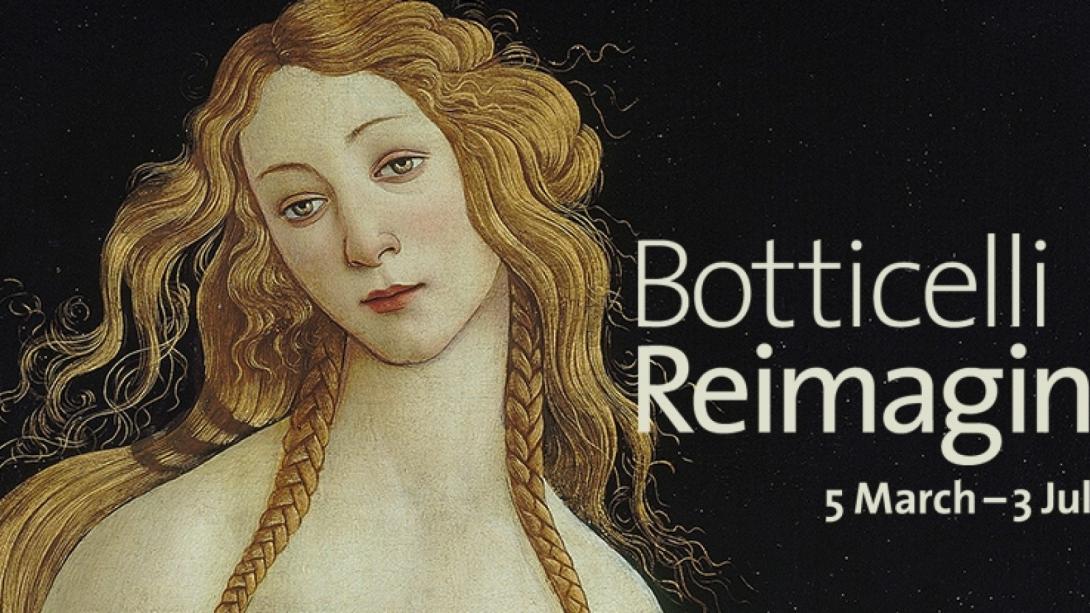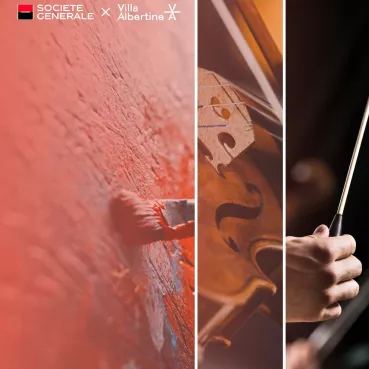
"Botticelli Reimagined", the retelling of a success story at the...
How did Sandro Botticelli, one of the greatest painters of the Florentine Renaissance, influence so many generations of artists from the 19th century to the present? Such is the question that the Victoria and Albert Museum in London seeks to answer with its exhibition "Botticelli Reimagined", made possible with the financial support of Societe Generale (major of the museum's principal exhibitions in 2016 and 2017). Visitors can discover his flourishing posterity from 5 March to 3 July 2016.
This spring is set to be a Botticellian one in London. It's the ideal season to exhibit the work of this painter famous for his nymphs and flowers. A Christian humanist fed on Neoplatonism, renowned for both his profane and religious themes – for example, his many Madonnas with child – Sandro Botticelli (1445-1510) is seen as a precursor to Italian Mannerism (whose undulating lines he anticipated). Although recognised in his own time, he was forgotten for 300 years and rediscovered around 1850 by many English painters. Since then, this artist, an intimate of the Medicis, whose features he immortalised, has continued to inspire all areas of contemporary art. Through 150 works – not only paintings, but sculptures, gowns, films and tapestries – the Victoria and Albert Museum evokes the richness of Botticelli's work. Divided into three parts, the exhibition will present a selection of canvases and drawings of the master – including Pallas and the Centaur from the Uffizi Gallery – alongside later works which revive him in spirit, signed by René Magritte, Elsa Schiaparelli, Andy Warhol and Cindy Sherman.
Saved by the 19th century
Not by coincidence, it was in England that the work of Sandro Botticelli arose from its ashes, unearthed by a group of painters, the Pre-Raphaelites, who were fervent devotees of 15th-century Italian art – the so-called "primitive" art that predated Raphael. They included Dante Gabriel Rossetti, Edward Burne-Jones and William Morris. All of them collected Botticelli's works and reinterpreted his aesthetic. Their passion went on to influence many French artists: Edgar Degas (who painted a copy of the Birth of Venus), the Symbolist Gustave Moreau and Ingres. Botticellian grace could even be found in the twirling dances of Isadora Duncan. One rediscovery, to which the exhibition dedicates an entire section, is the feminine figure of Rossetti's La Ghirlandata, a masterpiece of sensuality with the subject's cascade of red hair.
Beautiful as a Botticelli
The works of Botticelli "stand out in our collective visual memory", explains Martin Roth, Director of the Victoria and Albert Museum. The adjective "Botticellian", now a part of our everyday language, describes a certain type of beauty; it evokes golden hair, graceful swayed-hip poses, slender bodies and melancholy faces. Who doesn't remember the Three Graces clad in transparent veils of the famous Primavera, the skilfully composed allegorical painting uniting Christian iconography with mythology? Not only are the female models of Botticelli imitated by artists, but his taste for lines (in drawings) and floral ornamentation are emulated as well. As such, the evening gowns of Elsa Schiaparelli (1938), embroidered with foliage, evoke the ivy-covered armour of Pallas and the Centaur as well as the bed of flowers in Primavera.
Pop Venus
Embodying the feminine ideal, Botticelli's Venus (the beauty hiding modestly behind her hair in the famous painting The Birth of Venus) is the true star of the exhibition. She is portrayed by the actress Ursula Andress collecting seashells in in the Bond film Dr. No, duplicated in a series of prints by Andy Warhol, transformed into a kitsch Madonna emerging from the water by David LaChapelle, endowed with Asian features in a work by Yin Xin, plastered over Dolce & Gabbana dresses, and used as a model for Orlan's plastic surgery operations. Venus, whose features Marcel Proust borrowed for his character Odette in Remembrance of Things Past, has become a pop icon – a formidable rival to the Mona Lisa. She is an archetype whose history the Victoria and Albert Museum seeks to retrace, and whose secret to longevity it attempts to unlock.
Céline Piettre



